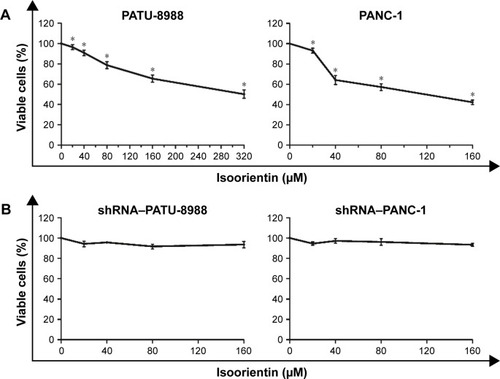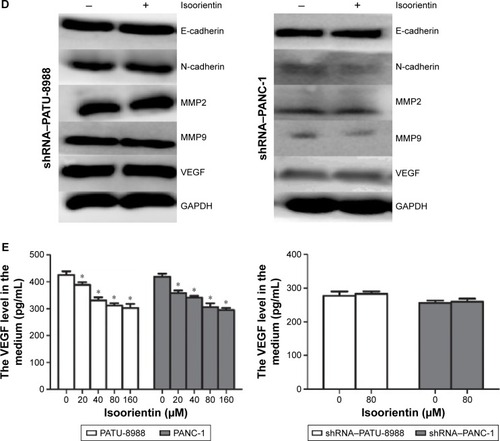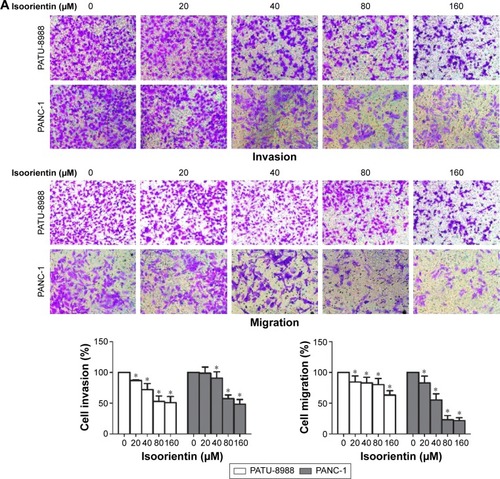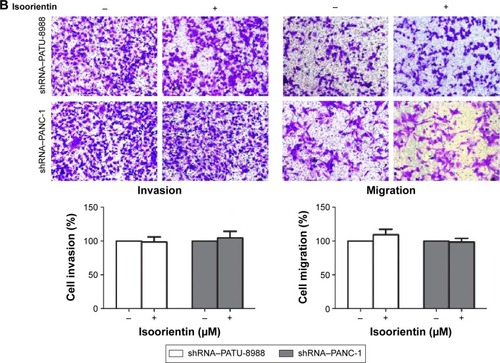Figures & data
Table 1 The primers used for real-time PCR
Figure 1 Isoorientin inhibits cell proliferation.

Figure 2 AMPK is constitutively activated by isoorientin.
Abbreviations: AMPK, AMP-activated protein kinase; PC, pancreatic cancer.

Figure 3 Pancreatic cancer cells are susceptible to isoorientin-induced apoptosis.

Figure 4 Isoorientin downregulates the expression of VEGF, MMPs, and proteins involved in the epithelial–mesenchymal transition.
Abbreviation: ELISA, enzyme-linked immunosorbent assay; MMP, matrix metalloproteinases; qRT-PCR, quantitative real-time PCR; VEGF, vascular endothelial growth factor.


Figure 5 Isoorientin inhibits the migration and invasion of pancreatic cancer cells.


